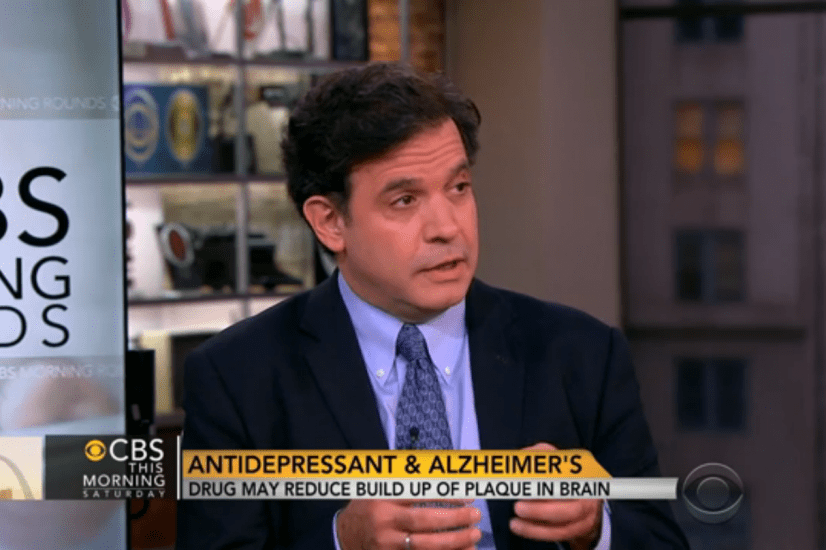
Posted April 25, 2013
BOSTON— Excessive levels of the protein CD33 can impede the clearance of the plaque-forming protein, amyloid beta, the key component of senile plaques in the brains of Alzheimer’s disease patients. The discovery, made by Dr. Rudolph Tanzi and colleagues at Massachusetts General Hospital, and co-funded by the Cure Alzheimer’s Fund and the National Institute of Mental Health (NIMH) will be published in the journal Neuron.
“Too much CD33 appears to promote late onset Alzheimer’s by preventing support cells from clearing out beta-amyloid containing plaques”, said Tanzi in a release issued by NIMH. The same release quotes Thomas R. Insel, M.D., Director of NIMH, as saying, “These results reveal, for the first time, a potentially powerful mechanism for protecting neurons from damaging toxicity and inflammation in brain disorders.”
The CD33 gene that produces the protein was one of four new AD gene candidates identified by Tanzi and colleagues in the Cure Alzheimer’s Fund supported Alzheimer’s Genome Project in 2008. The study was cited by TIME/CNN as one of that year’s Top Ten Medical Breakthroughs.
In the new study, Tanzi and colleagues discovered that a variant of the CD33 gene that protects against AD, lowered levels of CD33 in the brain leading to more efficient clearance of beta-amyloid. Increased CD33 levels were observed specifically on the surface of microglial cells in autopsied brains of Alzheimer’s patients. Microglial cells are support cells in the brain that clear away debris, including deposits of the amyloid beta protein. The study showed that higher CD33 levels in the microglial cells impaired their ability to ingest beta-amyloid and break it down. In contrast, blocking CD33 activity enhanced the ability of microglial cells to clear away beta-amyloid. When Tanzi and colleagues inactivated the CD33 gene in a mouse model of Alzheimer’s disease, levels of beta-amyloid and senile plaques were dramatically decreased in the brain.
Collectively, these findings suggest that CD33 is a key mediator of beta-amyloid accumulation in the brain. The results imply that blocking CD33 would enhance the brain’s ability to clear beta-amyloid more efficiently, reducing downstream AD pathology. Tanzi’s team is now trying to identify drugs that can inactivate CD33 as novel means for treating and preventing AD.
About Cure Alzheimer’s Fund
In seven years, with $20 million invested in research, Cure Alzheimer’s Fund has a strong track record in funding novel approaches to understanding the causes of Alzheimer’s disease and the biological processes that drive the pathology. Cure Alzheimer’s Fund has supported 72 projects in 51 laboratories of leading Alzheimer’s researchers in the US and abroad. Cure Alzheimer’s Fund is a 501c3 public charity and seeks no financial gain for its founders, donors or researchers. The Founders and Board members pay all expenses of the Foundation so that all contributions from others go directly to research.
Click here to read online abstract in Neuron Journal.





